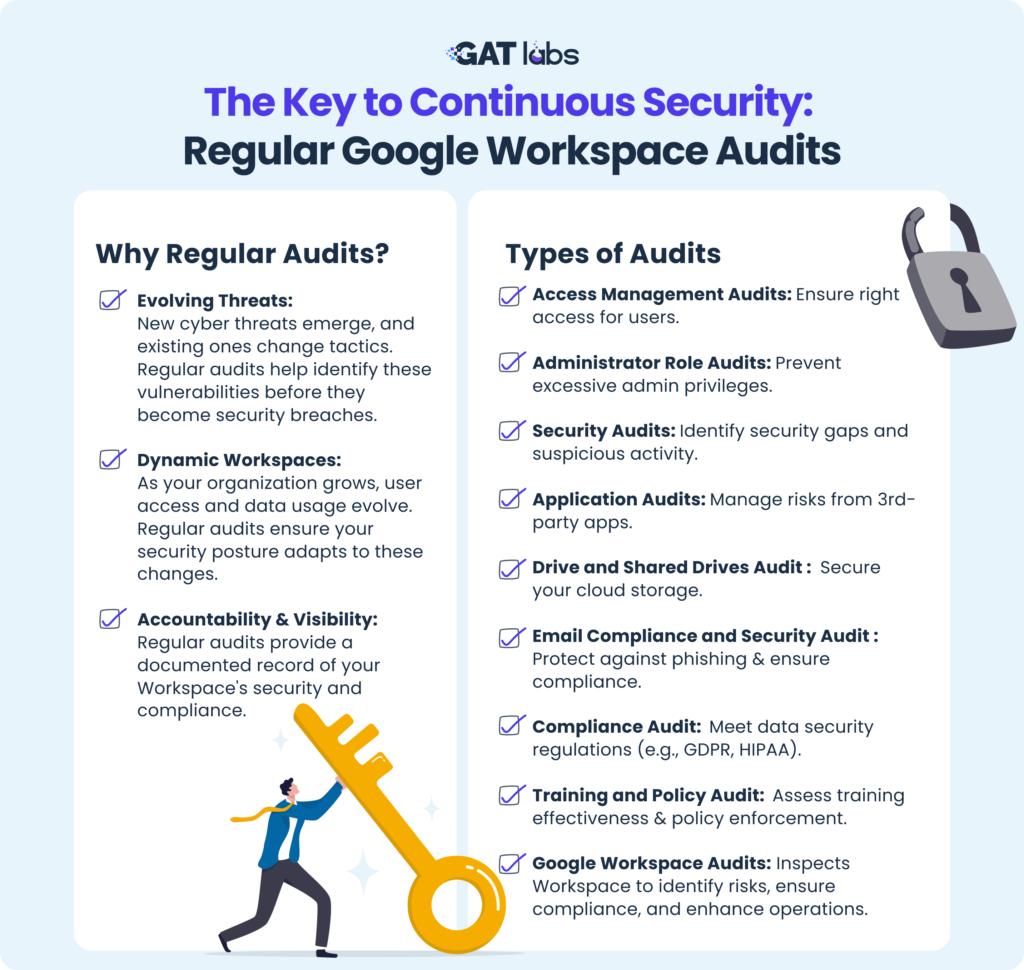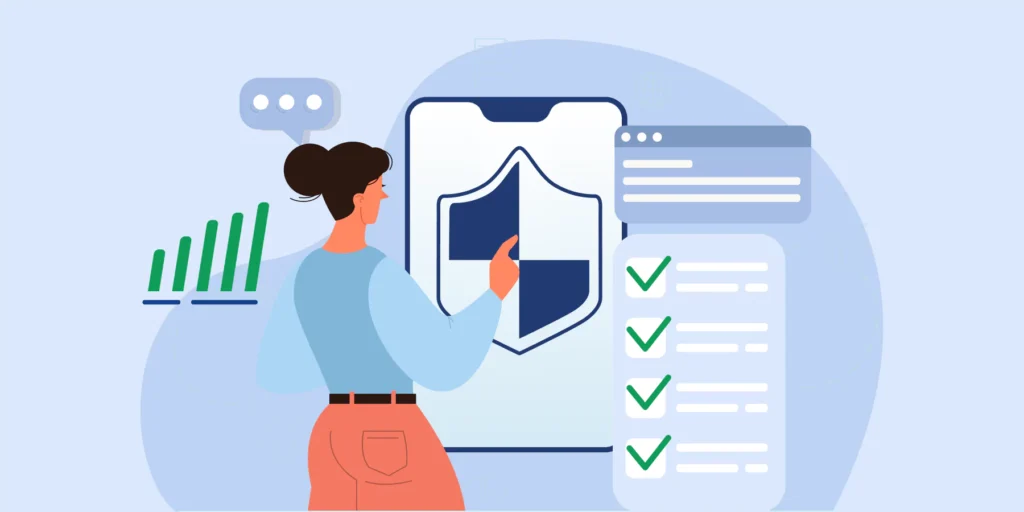Remember the days of the traditional 9-to-5 office grind? Those seem like a distant memory in today’s rapidly changing work environment. The past few years have been a whirlwind of transformation, with remote and hybrid work models becoming the new normal for many organisations. While this shift offers undeniable benefits like increased flexibility and productivity, it also presents a unique set of security challenges.
As we look towards the future, hybrid work is here to stay. However, the threat landscape is constantly evolving, demanding a proactive approach to security.
This blog post will equip you with the top security strategies for a successful hybrid work environment, ensuring you can embrace flexibility without compromising safety.
The Evolving Threats in a Hybrid World
A dispersed workforce creates a wider attack surface for malicious actors. If your organisation has a hybrid working model, you should be aware of those threats.
Here’s a look at some of the main cloud threats in 2024:
- ▪️ Supply Chain Attacks: Software vulnerabilities within the vast cloud supply chain can introduce potential entry points for attackers. These vulnerabilities might not be readily apparent within your organisation’s specific cloud environment.
- ▪️ Misconfiguration and Insufficient Permissions: Cloud misconfigurations arise from human error or lack of expertise in managing cloud security settings. Inadequate access controls can grant unauthorized users access to sensitive data or systems.
- ▪️ Phishing Attacks: Deceptive emails or messages designed to trick employees into revealing sensitive information or clicking malicious links.
- ▪️ Malware Infections: Employees working on unmanaged devices or insecure networks are more susceptible to malware, which can steal data or disrupt operations.
- ▪️ Unauthorised Access: Weak passwords and a lack of multi-factor authentication (MFA) make it easier for unauthorised users to gain access to sensitive Google Workspace data.
- ▪️ Data Loss Prevention (DLP): Accidental or intentional data leaks can occur when employees work remotely and may not be aware of proper data handling procedures.
- ▪️ Zero-Day Vulnerabilities: Imagine a hidden hole in your security wall that attackers can exploit to gain access to your system. Zero-day vulnerabilities are previously unknown flaws in software or systems that attackers actively search for. Since there’s no patch available initially, these vulnerabilities pose a significant threat. Regular security updates, vulnerability scanning, and security software can help mitigate these risks.
💡Tip: Maximizing security for your enterprise goes beyond these essential strategies. For those seeking to enhance their Google Workspace security posture further, we recommend checking out our series of blogs dedicated to advanced Google Workspace auditing skills. This series will equip you with the tools to gain deeper insights into user activity and identify potential security risks.

Building a Secure Bridge: Essential Security Strategies
Securing your hybrid work environment requires a multi-layered approach. Here are some key strategies to consider:
- ▪️ Implement Multi-Factor Authentication (MFA): MFA adds an extra layer of security beyond passwords. This significantly reduces the risk of unauthorised access.
- ▪️ Enforce Strong Password Policies: Encourage complex passwords and regular password changes to further strengthen account security.
- ▪️ Educate Employees on Cybersecurity Best Practices: Regular training sessions can raise awareness of phishing scams, malware threats, and best practices for secure remote work.
- ▪️ Implement the Principle of Least Privilege (POLP): Grant users only the minimum level of access required to perform their jobs. This reduces the potential damage if unauthorized access occurs.
- ▪️ Segment Your Network: Isolate sensitive data and applications on separate network segments to minimise the potential impact of a security breach.
- ▪️ Utilise Data Loss Prevention (DLP): DLP solutions can help define and enforce data security policies, preventing sensitive information from being accidentally shared externally.
- ▪️ Deploy Mobile Device Management (MDM): MDM solutions help secure employee devices used to access Google Workspace, regardless of location.
Embracing Zero Trust Security for the Hybrid Workplace
Traditional security models often rely on a perimeter-based approach, trusting users and devices once they are inside the network. However, in a hybrid environment with a dispersed workforce, this approach becomes less effective.
Zero Trust Security offers a more robust approach to securing hybrid work environments. Here’s the core principle: “Never trust, always verify.”
- ▪️ Zero Trust assumes that no user or device is inherently trusted, regardless of location.
- ▪️ Access to resources is granted based on a “least privilege” principle, meaning users only get the access they absolutely need to perform their job duties.
- ▪️ Continuous verification of access requests ensures that only authorised users and devices can access sensitive data and applications.
Implementing a zero-trust security model can significantly enhance the security posture of your hybrid work environment.
Leveraging Cloud-Based Security Solutions
Cloud-based security solutions are a category of security tools and services delivered via the Internet. They are specifically designed to protect data, applications, and workloads in cloud environments. Unlike traditional on-premise security solutions, cloud-based solutions are hosted by a third-party provider and accessed remotely.
This offers several advantages, making them particularly well-suited for the dynamic and dispersed nature of hybrid work models.
Key benefits of cloud-based security solutions
- ▪️ Centralised Management: Security tools and configurations can be managed from a single location, simplifying administration and ensuring consistency across the organisation.
- ▪️ Scalability: Cloud-based solutions can easily scale to meet the growing needs of your organisation.
- ▪️ Advanced Security Features: Cloud providers offer a wide range of advanced security features, such as threat intelligence, anomaly detection, and machine learning. This may not be feasible for on-premise deployments.
- ▪️ Reduced Costs: Cloud-based solutions eliminate the need for upfront hardware and software investments, potentially leading to lower overall security costs.
- ▪️ Always Up to Date: Cloud providers are constantly updating their security infrastructure and solutions to address the latest threats. This ensures your organization benefits from the most recent security advancements.
Common types of cloud-based security solutions
- ▪️ Cloud Access Security Broker (CASB): A CASB acts as a gateway between your users and cloud services. It enforces security policies, controls access to cloud applications, and monitors for suspicious activity.
- ▪️ Security Information and Event Management (SIEM): A SIEM collects and analyzes security data from various sources across your hybrid environment. It helps identify potential threats and enables faster incident response.
- ▪️ Cloud Endpoint Protection: This solution protects devices (laptops, tablets, smartphones) accessing cloud resources from malware, phishing attacks, and other threats.
- ▪️ Data Loss Prevention (DLP): DLP solutions help prevent accidental or intentional data leaks. In a few words, they monitor and control data movement across your cloud environment.
By leveraging cloud-based security solutions, you can gain a comprehensive view of your security posture. As a result, you can implement robust protections for your hybrid workforce.
Beyond the Basics: Developing a Cybersecurity Incident Response Plan
Even with strong security measures in place, cyberattacks can still happen. Having a Cybersecurity Incident Response Plan (CSIRP) in place is crucial for minimising damage and recovering quickly in the event of a security breach.
Our recent blog, How to Craft a Bulletproof Cybersecurity Incident Response Plan, outlines the key steps involved in developing a comprehensive CSIRP.

Embrace Flexibility, Prioritize Security
Hybrid work models offer significant advantages, but security can’t be an afterthought. Implementing these strategies and developing a robust CSIRP will equip your organisation to navigate the evolving security landscape.
Ready to take the next step? Contact us today to discuss your hybrid work security strategy!
Insights That Matter. In Your Inbox.
Join our newsletter for practical tips on managing, securing, and getting the most out of Google Workspace, designed with Admins and IT teams in mind.







